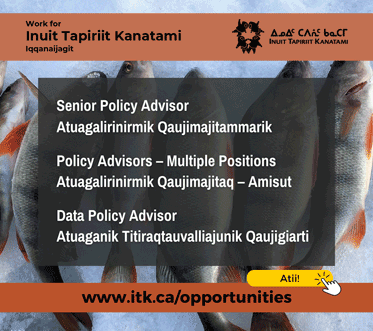Shipborne health study to pay dividends of better statistics, follow-up treatment
Iqaluit residents prodded and poked
Pitsiulaq Naglingniq is hungry.
After all, it's been more than 12 hours since he's had anything to eat. But he must have one more blood test before he'll get a boxed lunch with juice, a boiled egg, crackers and a muffin. In the meantime he's amusing himself with a heart monitor, about the size of a small digital camera, he's wearing around his neck.
"I'm walking around with a little purse," he says, grinning.
Naglingniq is rolling up his sleeve and taking a poke in the arm as part of Qanuippitali? – the largest-ever survey of the state of Inuit health, which arrived in Iqaluit Sept. 8, a little more than halfway through its pan-Arctic tour.
"This is holy day because we've been poking people all day and it's Sunday," remarks nurse Michele Martel as she prepares to stick a needle in Naglingniq's arm to take a blood sample.
The Iqaluit resident doesn't mind what he's going through: blood samples, heart rate tests, and numerous questions about his diet, lifestyle, housing situation and state of health. Naglingniq has already met a few old friends aboard the coast guard ship Amundsen – the survey's floating home – and he hopes the survey will help make Inuit healthier in the long run.
"Hopefully they'll learn our health system is much better than it was," he said.
Like Naglingniq, Susie Arnaquq is hungry too. But she also doesn't mind the inconvenience if it helps researchers gain a better understanding of Inuit health.
"I felt it was very important for the community and for myself," she said.
Arnaquq's only complaint is that there weren't enough Inuit from the six- and eight-storey apartments in Iqaluit. "I think that was wrong. There's a lot of Inuit that live there."
But Grace Egeland, principal investigator for the Inuit Health Survey, said Iqaluit's diverse population made it harder for researchers to get enough Inuit at random to participate in the survey. But a radio push, plus the hiring of more workers, allowed study organizers to triple the number of participants in four days from 40 to 120.
In all, more than a 1,000 Nunavut Inuit will take part in this year's phase of the survey, Egeland said. In the communities, she said organizers have had to turn away people who wanted to volunteer for the study.
"If we take volunteers, you can show anything with a survey if it's not random depending on who you pick to be in it," she said. "If it's not random then we can't have confidence in what it's telling us."
Organizers have taken great pains to avoid any resemblance between the Inuit Health Survey and the bad old days of the CD Howe, the notorious ship that travelled the North in the 1950s and 1960s testing Inuit for tuberculosis. Many patients were then taken south for treatment, and some never returned.
On Tuesday, elders, politicians and Qanuippitali? staff took part in a ceremony for tuberculosis victims at Abe Okpik Hall in Apex.
But aboard the Amundsen, the presence of people like Martha Malliki, who works as an interviewer, greeter and sometime interpreter, illustrates the difference between now and then. Malliki's job is to welcome survey participants aboard and help them through no fewer than seven separate questionnaires on diet, lifestyle, environment, family medical history, and for women, reproductive history.
Malliki, who was born in Igloolik but now lives in Iqaluit, calls her time with the survey a "once-in-a-lifetime chance."
"It's been long overdue [and] needed up here," she said. "I feel it will benefit so much the people of Nunavut."
And Egeland said extensive consultations, plus the involvement of the Government of Nunavut and the Inuit organizations, mean Inuit stand to benefit directly from the study. Not only do the governments get statistics they can use for health care planning, Egeland said, but individual participants will get any treatment they need if their results turn up health problems.
"This is important for planning and guiding how to spend health care dollars and to lobby for more dollars to target special problems," she said.
The Inuit Health Survey wraps up next year when the Amundsen travels to the Kitikmeot, Inuvialuit and Nunatsiavut regions. Qanuippitali? will be in Pangnirtung this weekend before steaming up the Baffin coast for stops in Qikiqtarjuaq and Clyde River.





(0) Comments